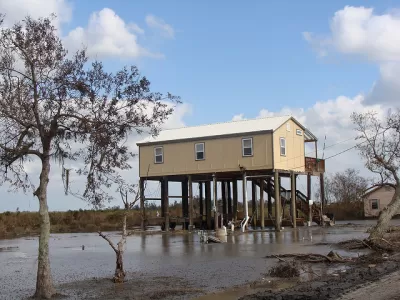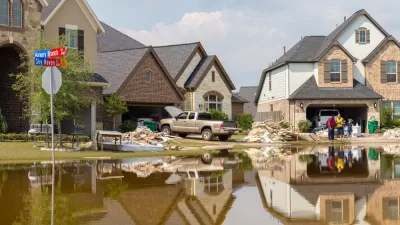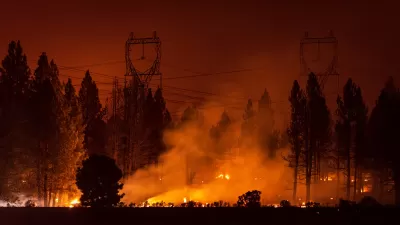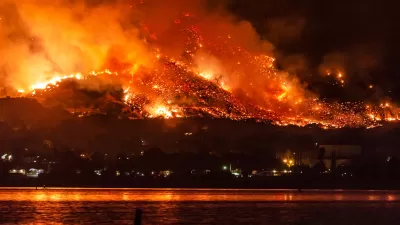The regions of the United States that have provided the most hospitable to human life and agriculture on the continent will likely be abandoned in a future altered by climate change, according to this interactive mapping project.

Al Shaw, Abrahm Lustgarten, and Jeremy W. Goldsmith crunch data from a number of recent sources to map out the future of the United States as altered by climate change. "[T]he North American places where humans have lived for thousands of years will shift," according to the authors of the article to introduce the interactive map found at the source link.
The project uses data from a paper published in the Proceedings of the National Academy of Sciences that maps out the shifting future of the human climate "niche," described here at "the regions where temperature and precipitation have been most suitable for humans to live in over the past 6,000 years."
As a result of climate change, "the niche could shift drastically northward. Under even a moderate carbon emissions scenario (known as RCP 4.5), by 2070 much of the Southeast becomes less suitable and the niche shifts toward the Midwest."
Additional research by the Rhodium Group supplies the map's focus on rising temperatures in much of the United States. But there's a catch: "Heat alone, however, won’t determine Americans’ fate. A new climate analysis — presented for the first time here — projects how humidity and heat will collide to form 'wet bulb' temperatures that will disrupt the norms of daily existence."
The outcomes predicted here—including additional factors like sea-level rise, large wildfires, crop yields that will create a cascade of compounding calamities—are nothing short of catastrophic: "profound economic loss" and mass migration in the United States.
Another article by Abrahm Lustgarten supplements the mapping project by exploring in detail the likelihood of a climate migration in the United States within this century. A climate migration is a familiar theme in the news in recent weeks, as fires rage throughout the west and hurricanes stack up in the Atlanta Ocean and Gulf of Mexico.
FULL STORY: New Climate Maps Show a Transformed United States

Planetizen Federal Action Tracker
A weekly monitor of how Trump’s orders and actions are impacting planners and planning in America.

San Francisco's School District Spent $105M To Build Affordable Housing for Teachers — And That's Just the Beginning
SFUSD joins a growing list of school districts using their land holdings to address housing affordability challenges faced by their own employees.

The Tiny, Adorable $7,000 Car Turning Japan Onto EVs
The single seat Mibot charges from a regular plug as quickly as an iPad, and is about half the price of an average EV.

Seattle's Plan for Adopting Driverless Cars
Equity, safety, accessibility and affordability are front of mind as the city prepares for robotaxis and other autonomous vehicles.

As Trump Phases Out FEMA, Is It Time to Flee the Floodplains?
With less federal funding available for disaster relief efforts, the need to relocate at-risk communities is more urgent than ever.

With Protected Lanes, 460% More People Commute by Bike
For those needing more ammo, more data proving what we already knew is here.
Urban Design for Planners 1: Software Tools
This six-course series explores essential urban design concepts using open source software and equips planners with the tools they need to participate fully in the urban design process.
Planning for Universal Design
Learn the tools for implementing Universal Design in planning regulations.
Smith Gee Studio
City of Charlotte
City of Camden Redevelopment Agency
City of Astoria
Transportation Research & Education Center (TREC) at Portland State University
US High Speed Rail Association
City of Camden Redevelopment Agency
Municipality of Princeton (NJ)





























